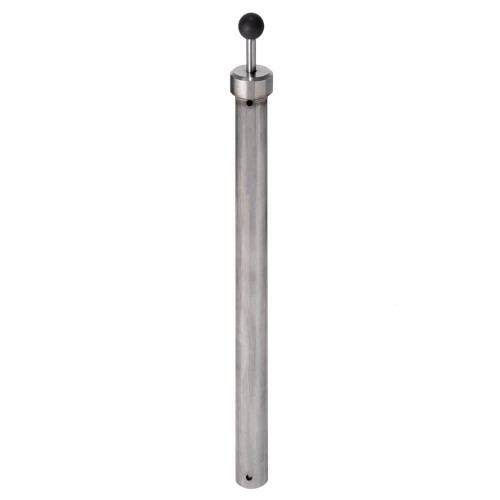The Manual Standard Soil Compaction Hammer is an indispensable tool for anyone involved in soil testing. Whether you're a geotechnical engineer, researcher, or laboratory technician, this hammer will help you mold soil samples with ease and accuracy. With a mass of 5.5lb (2.5kg) enclosed in a guide sleeve with vent holes, the hammer ensures unrestricted free-fall and a drop of 12in (305mm).
Made of rust-resistant plated steel, this soil compaction hammer is built to last and withstand repeated use. The 2in (51mm) circular face is perfectly designed to compact soil samples to the desired density, making it an ideal instrument for determining moisture-density relationships (Proctor testing). With an impeccable build quality, you can rely on this compaction hammer to accurately compact soil samples, leaving no room for errors.
The Manual Standard Soil Compaction Hammer complies with multiple test methods such as AASHTO T134, T135, T136, and T180, as well as ASTM D 1557, D 1558, D 558, D 559, and D 698. This means that regardless of which research or testing organization you belong to, this product provides reliable results that meet industry standards. So, you can be sure you're getting the correct density and moisture measurements every time.
This manual soil compaction hammer is ergonomically designed for use by a single person and can be comfortably operated with minimal strain. The hammer's lightweight construction also makes it easy to carry around, transport, and store.
In conclusion, the Manual Standard Soil Compaction Hammer is a must-have for soil testing professionals who require accurate and consistent data. The hammer is built to last and meet industry standards, making it an indispensable tool in laboratories, research facilities, and construction sites.
View full line of Standard Sand and Silica for ASTM Tests and Ottawa Test Sand for Cube Molds
Browse our selection of Sand Cone Test Equipment from our variety of tools and supplies below.
Related Blog for Sand Cone Test
Sand Equivalent Test: What Can You Learn
Understanding Sand Equivalent Test for Soils and Aggregates
How to Test Sand Quality at Construction Sites for Concrete
Fineness Modulus of Sand IS Code
Selecting Sieve Sizes: Tips for Soil, Sand & Aggregate
Sand Cone Test Explained: Techniques and Best Practices
How to Become a Soil Testing Certification Technician
Understanding Proctor Test: Procedure, Apparatus and Results
What Is Silica Sand and Its Uses


